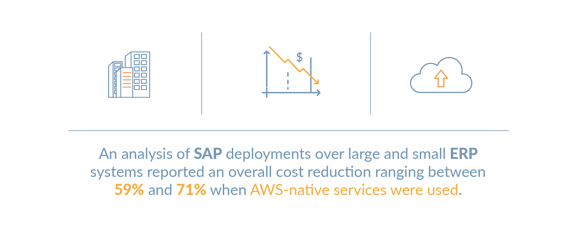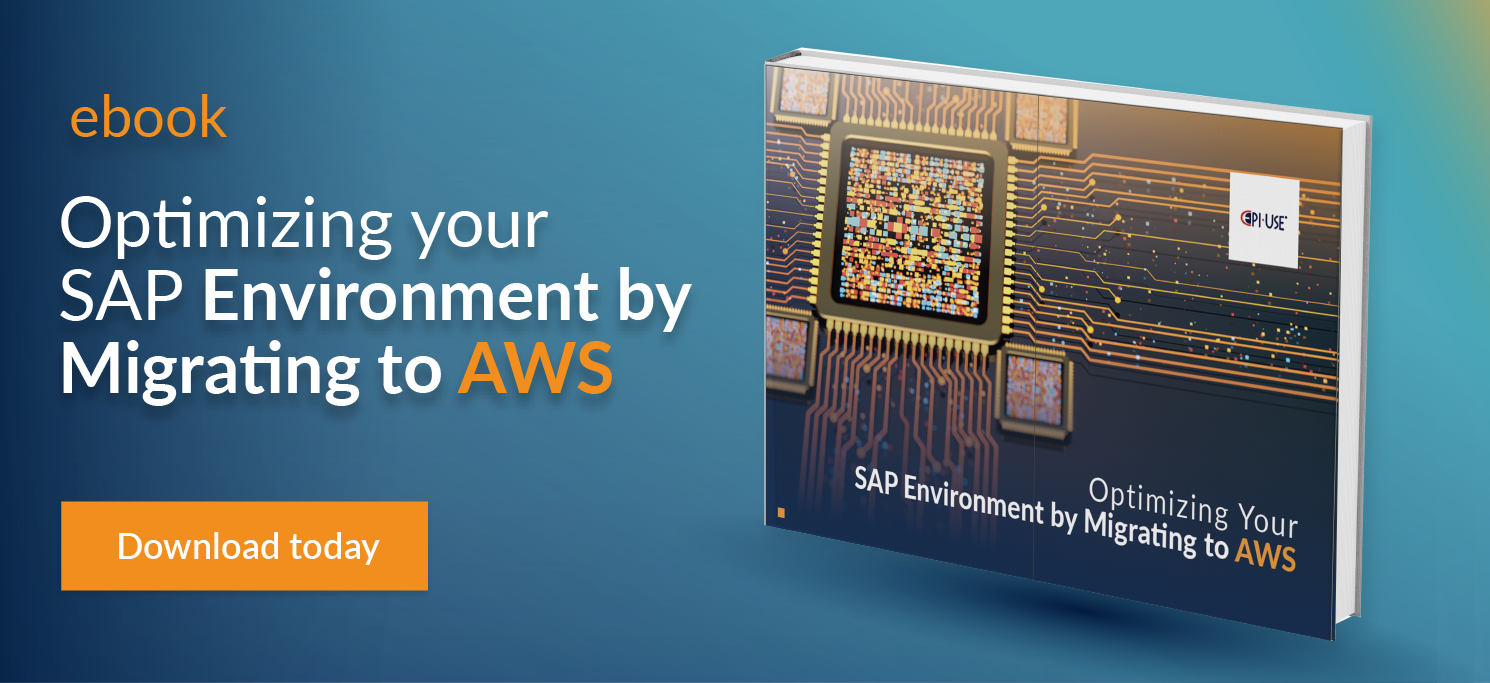SAP is used by most of the world’s largest companies: 80% of Fortune 500 companies, 87% of Forbes Global 2000, and 98% of the world’s most valued brands.
Running mission-critical applications, organizations need extreme dependability, high availability, and performance that meets real-time operations. Many on-premises SAP deployments offer stability and predictable performance, which often comes with high-cost infrastructure and inflexible deployments.
Those are just a few reasons that a growing number of SAP customers are migrating SAP operations to AWS. More than 5,000 organizations run SAP on AWS, across nearly every industry and geographic region. Moving to AWS enables cloud computing capabilities to be integrated with SAP’s application to meet the needs of the most demanding organizations while reducing the cost and time involved with infrastructure management.
There are other significant benefits, including:
1. Cost Savings
SAP on AWS reduces the total cost of ownership (TCO) by eliminating hardware refresh costs. Continuous improvements to the AWS infrastructure ensure the latest technology without having to replace legacy equipment. The Kellogg Company migrated its SAP applications and estimates it saved nearly $1 million in software, hardware, and maintenance costs using AWS for test and development environments.
AWS also allows you to right-size your SAP landscape to stop over provisioning and consolidate systems and data. SAP users can leverage Amazon S3 intelligent tiering to optimize storage and automatically move data to the most cost-effective access tier without impacting performance.

Recently EPI-USE reduced Allbirds’ EFS costs by 120% by switching from EFS-only backups to EFS and S3-based backups.
Using the EPI-USE product landscape toolset, Data Sync Manager, non-productive SAP systems can be reduced in footprint and refreshed from a production source, saving on AWS infrastructure resources, as well as being anonymized (scrambled) for data security reasons.
2. Robust Infrastructure
AWS provides purpose-built infrastructure and certified infrastructure for SAP.
AWS spans 99 Availability Zones in 31 regions globally and continues to grow. With more than 450 points of presence, you can deploy workloads almost anywhere or launch SAP closer to end-users with single-digit millisecond latency.
3. Superior Performance
Leveraging the in-memory database potential of SAP HANA requires compute power and memory capacity that is often beyond existing data center platforms. Migrating to AWS will improve SAP performance with SAP-certified instances from 256 GB to 24 TB. In addition, you can scale to 48 TB for SAP S/4HANA and 100 TB for SAP BW/4HANA, running up to 80,000 IOPS per instance consistently.
Organizations deploying SAP on AWS typically realize significant performance improvements. For example, by deploying best practices for SAP and rightsizing using the Compute Optimizer, EPI-USE was able to eliminate performance bottlenecks associated with EC2 production workloads for Allbirds while also reducing costs.
BP was able to decommission 11 application data servers, moving SAP to AWS for its Castrol business line, speeding up average response times by 40%.
Another benefit of leveraging SAP on AWS is the ability to connect AWS-native components for SAP performance. There are more than 200 AWS services, including data lakes, artificial intelligence and machine language workloads, IoT, and more. For organizations that use other cloud resources, you can also use the same tools across other AWS applications for consistency.
4. Rapid Scalability
With SAP on AWS, you pay only for the infrastructure and compute resources you need and use. This helps make use cost-efficient while reserving the right to scale quickly as business needs evolve. AWS enables scaling the SAP system infrastructure in either direction, including adjustments during peak periods.
For example, you can increase scale-up for month-end closings, overnight batch jobs, or peak periods and then scale down to return to normal operations.
5. Automation Deployment
Deploying SAP on AWS allows organizations to leverage the robust automation tools of AWS to improve efficiency. For example, companies can:
|
Deploy production-ready SAP landscapes quickly using the AWS Launch Wizard, often within a few hours and with fewer personnel. |
Simplify and accelerate backups with AWS Backint Agent. |
Offload infrastructure management to EPI-USE's SAP on AWS Managed Services. |
Leverage |
6. Organizational Flexibility
You can improve business processes using AWS to expand your capabilities. You may start with a lift-and-shift approach to existing SAP systems to modernize operations, including rehosting to optimize SAP without making significant changes to the application stack.
You can deploy a hybrid approach to keep some components on-premises or in a private cloud and gradually move workloads to AWS to minimize disruption or rebuild your SAP system on AWS using AWS native services.
You can then re-size environments at any time as your needs change while maintaining a consistent, cloud-native environment across instances and services.
_______________________________________________________________________________________
Is migrating your SAP Platform to AWS right for you?
Want to read more on this topic? Download our latest ebook, where we take a closer look at why organizations trust AWS to run their mission-critical SAP workloads more than any other cloud provider, exploring specific real-world examples of how clients are using AWS to power their SAP transformations.



